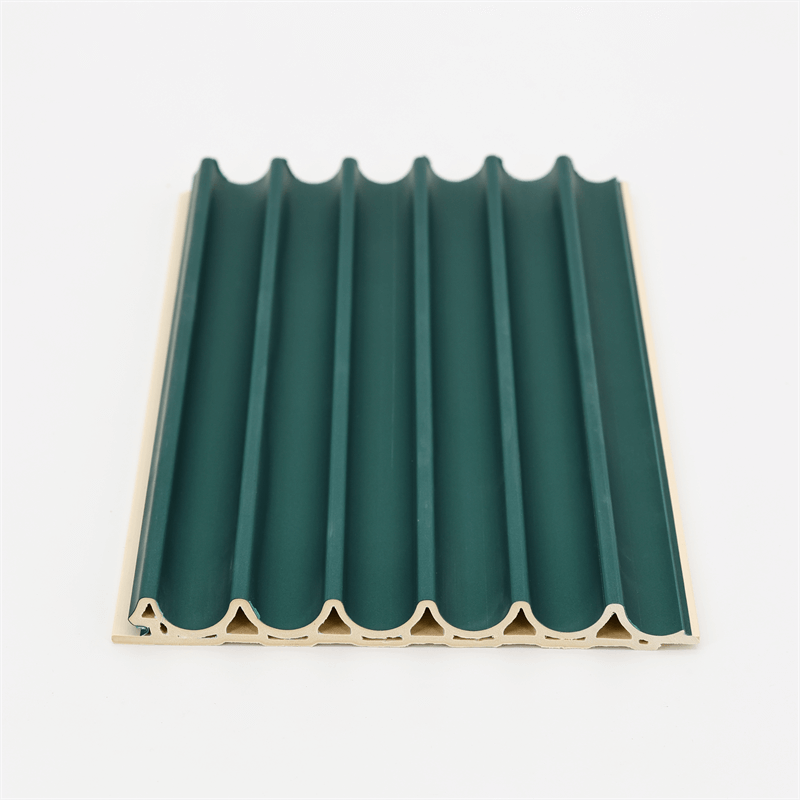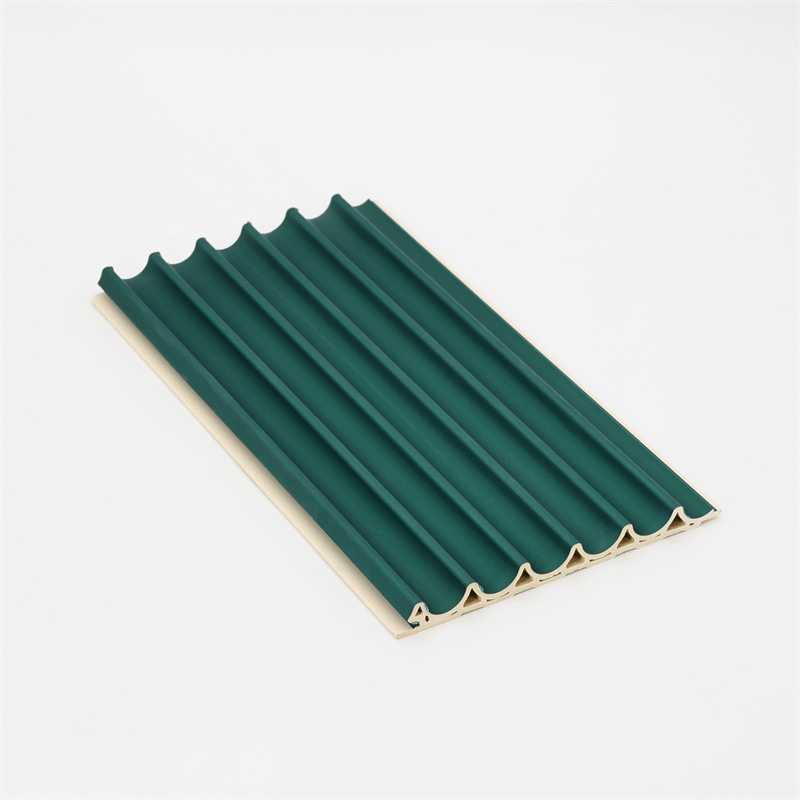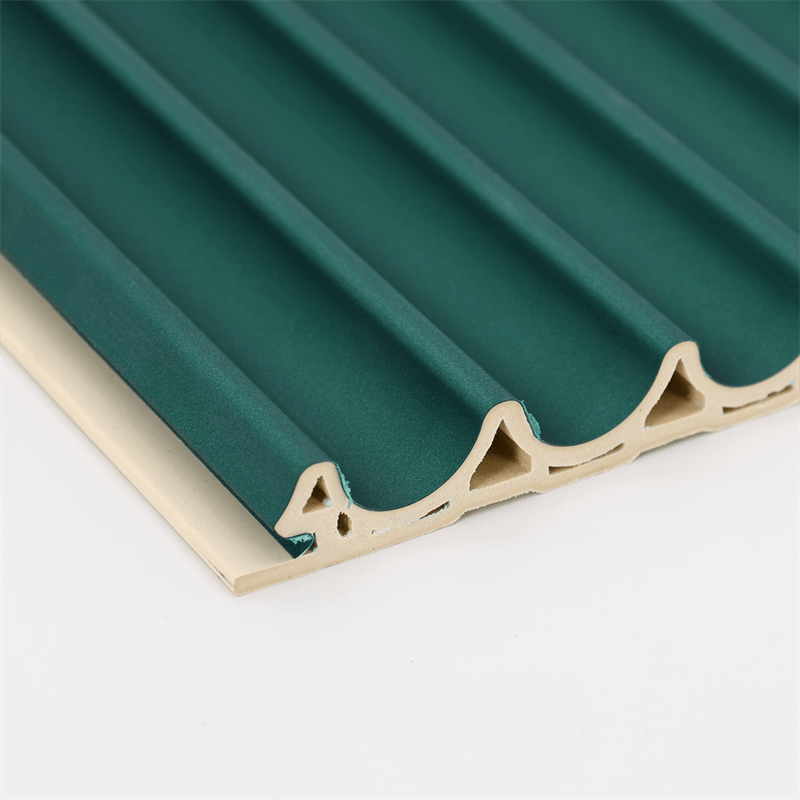In the world of interior design and architecture, wall panels play a significant role in enhancing the aesthetic appeal and functionality of a space.
One of the most innovative and versatile options available today is WPC (Wood-Plastic Composite) wall panels.
These panels have gained immense popularity due to their unique combination of beauty, durability, and sustainability.
In this comprehensive guide, we will explore the beauty and benefits of WPC wall panels, understanding their composition, advantages, installation process, and their impact on the environment.
I. Understanding WPC Wall Panels
WPC wall panels are a type of composite material that combines wood fibers or flour with thermoplastics, such as polyethylene, polypropylene, or PVC.
This fusion of natural fibers and synthetic polymers results in a material that possesses the best qualities of both components.
The wood fibers provide the panels with a warm and natural appearance, while the thermoplastic polymers add strength, durability, and resistance to moisture, rot, and insects.
These wall panels come in various sizes, designs, and textures, allowing for endless creative possibilities.
They can mimic the appearance of real wood, stone, or other materials, providing a versatile and cost-effective alternative for achieving desired aesthetics.
II. The Advantages of WPC Wall Panels
- Durability and Longevity: WPC wall panels are known for their exceptional durability, making them suitable for both interior and exterior applications. Unlike traditional wood panels, they are resistant to moisture, rot, and termite damage, ensuring a longer lifespan. WPC panels are also highly resistant to fading, warping, and cracking, even in harsh weather conditions. These qualities make them an ideal choice for areas exposed to high humidity, such as bathrooms and kitchens, as well as outdoor spaces.
- Low Maintenance: One of the significant benefits of WPC wall panels is their low maintenance requirements. Unlike natural wood, which requires regular sealing, staining, or painting, WPC panels are virtually maintenance-free. They do not require any special treatments or preservatives to maintain their appearance and structural integrity. Simple cleaning with mild soap and water is usually sufficient to keep them looking fresh and new.
- Eco-Friendly: WPC wall panels are an environmentally-friendly alternative to traditional wall materials. By utilizing wood waste and recycled plastics, these panels contribute to the reduction of deforestation and the diversion of plastic waste from landfills. Additionally, the manufacturing process of WPC panels consumes less energy compared to the production of concrete or steel materials, further reducing their environmental impact.
- Design Versatility: WPC wall panels offer endless design possibilities, allowing architects and designers to unleash their creativity. These panels come in a wide range of colors, textures, and finishes, enabling the creation of various styles and moods. Whether you desire a contemporary, rustic, or minimalist look, WPC panels can be customized to suit your aesthetic preferences. They can also be easily cut, shaped, and installed to create unique patterns, accent walls, or focal points in any space.
III. Installation Process of WPC Wall Panels
Installing WPC wall panels is a straightforward process that can be accomplished by both professionals and DIY enthusiasts. Here are the basic steps involved:
- Preparation: Start by measuring the area where the panels will be installed and calculate the required number of panels. Ensure that the wall surface is clean, dry, and free from any loose debris.
- Cutting Panels: Use a saw or a specialized cutting tool to trim the panels to the desired size. Take precise measurements and mark the panels before cutting to ensure accuracy.
- Mounting: Apply an adhesive or use screws to attach the panels to the wall surface. Follow the manufacturer’s instructions regarding the recommended adhesive or screw placement for optimal installation.
- Finishing Touches: Once the panels are securely installed, use matching trim pieces or moldings to create a seamless transition between panels or to cover any exposed edges. This step adds a polished and professional look to the installation.
IV. Environmental Impact of WPC Wall Panels
Sustainability is a crucial factor to consider in today’s construction and design industry. WPC wall panels offer several environmental benefits that make them a responsible choice:
- Reduced Resource Consumption: By utilizing wood waste and recycled plastics, WPC panels reduce the demand for virgin timber and petroleum-based plastics, thereby conserving natural resources.
- Lower Carbon Footprint: The manufacturing process of WPC panels requires less energy compared to traditional wall materials. This results in reduced greenhouse gas emissions and contributes to a lower carbon footprint.
- Recycling and Reusability: WPC panels can be recycled at the end of their lifespan, further minimizing waste and environmental impact. Moreover, the versatility of these panels allows for reusability in different applications, extending their lifecycle.
WPC wall panels offer a compelling combination of beauty, durability, and sustainability, making them an excellent choice for enhancing the aesthetics and functionality of any space.
With their diverse designs, low maintenance requirements, and eco-friendly attributes, these panels have become a popular option in both residential and commercial projects.
By understanding the composition, advantages, installation process, and environmental impact of WPC wall panels, architects, designers, and homeowners can make informed decisions when it comes to transforming their spaces into stunning and sustainable works of art.

In conclusion, WPC wall panels provide an array of benefits that make them a highly attractive option for interior and exterior design projects.
Their composition of wood fibers and thermoplastic polymers combines the beauty of natural wood with the durability and resistance of synthetic materials.
This results in panels that are not only visually appealing but also highly resistant to moisture, rot, insects, and fading.
Moreover, the advantages of WPC wall panels extend beyond their aesthetics. Their low maintenance requirements save time and effort, making them a practical choice for busy homeowners and commercial spaces. Additionally, their eco-friendly nature, derived from the use of recycled materials and reduced energy consumption during manufacturing, contributes to sustainable construction practices.
The installation process of WPC wall panels is relatively straightforward, allowing for efficient and hassle-free installations.
Whether you’re a professional contractor or a DIY enthusiast, these panels offer ease and flexibility during the installation process.
By choosing WPC wall panels, you can transform your space with endless design possibilities, from contemporary to rustic styles, while enjoying the peace of mind that comes with their long lifespan and resistance to environmental factors.
In a world increasingly focused on sustainable living and responsible construction, WPC wall panels stand out as an environmentally-friendly option that balances aesthetics, durability, and ecological consciousness. By opting for these panels, you contribute to the preservation of natural resources, reduction of waste, and lower carbon footprint.
In conclusion, WPC wall panels offer a comprehensive solution that combines beauty, functionality, and sustainability.
Whether you’re renovating your home, designing an office space, or working on a commercial project, these panels provide an excellent choice that caters to your aesthetic preferences while minimizing environmental impact.
Embrace the beauty and benefits of WPC wall panels to create spaces that are visually captivating, durable, and eco-friendly.


